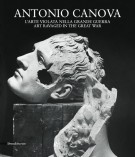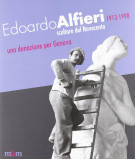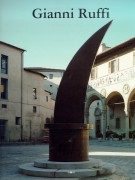Antonio Canova L'arte violata nella Grande Guerra Art ravaged in the Great War22
| Autore/i | Mario Guderzo, Alberto Prandi | ||
| Editore | Silvana Editoriale | Luogo | Milano |
| Anno | 2015 | Pagine | 176 |
| Dimensioni | 24x29 (cm) | Illustrazioni | 176 ill. colori n.t. - colour ills. |
| Legatura | bross.ill colori con alette - paperback illustrated | Conservazione | Nuovo - New |
| Lingua | Italiano/Inglese - Italian/English Text | Peso | 1300 (gr) |
| ISBN | 8836631959 | EAN-13 | 9788836631957 |
momentaneamente non disponibile
Gipsoteca di Possagno / Plaster Cast Gallery of Possagno, Treviso, luglio / July 2015 - febbraio / February 2016.
Nel dicembre 1917 un proiettile sfonda il tetto della Gipsoteca di Possagno: la granata si frammenta in migliaia di schegge mutilando i gessi di Antonio Canova.
Quest'arte violata si è rivelata nel tempo una testimonianza di straordinaria intensità ed efficacia. Le opere ferite di Canova, che appaiono come veri e propri corpi martoriati, sembrano stare in luogo dei soldati vittime della Grande Guerra che vennero sistematicamente celati per opportunità o per pudore.
Il catalogo presenta la suggestiva documentazione fotografica di queste opere, realizzata all'epoca da Stefano Serafin. A cento anni dall'evento, lo sguardo di due fotografi ritorna oggi su questi stessi lavori: Guido Guidi e Gian Luca Eulisse rileggono i gessi canoviani mutilati e frammentati dalle granate e ci propongono una serie di immagini che tornano a far parlare i corpi, che pur se corpi rappresentati, così offesi e menomati, ancora oggi non sanno tacere: testimoni senza tempo della più tragica e ingiustificabile delle esperienze umane, la guerra.
In December 1917, a projectile burst through the roof of the Plaster Cast Gallery of Possagno, exploding into thousands of pieces and mutilating Antonio Canova's plaster casts.
Over time, this ravaged art would prove to be an extraordinarily intense and effective testimony. Canova's wounded statues, which look like actual tortured bodies, seem to stand in for the soldiers who fell victim to the Great War, whose deaths were sistematically covered up, whether out of expedience or discretion.
The catalogue features the haunting photographic documentation of these works taken at the time by Stefano Serafin. One hundred years later, Guido Guidi and Gian Luca Eulisse turned their gaze on these same statues. The two photographers reinterpret Canova's mutilated and shattered plaster casts, creating a series of images in which the bodies speak again. Although they are only sculpted bodies, distinctly injured and maimed, they cannot be silent, for they are enduring witnesses of war, the most tragic and injustifiable chapter of the human experience. (T-CA)
Potrebbero interessarti anche...





